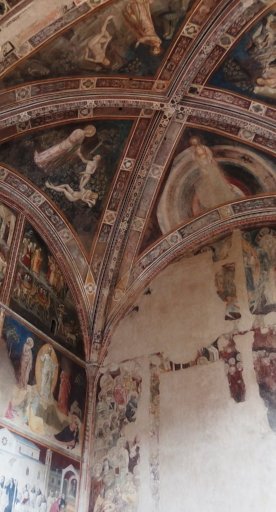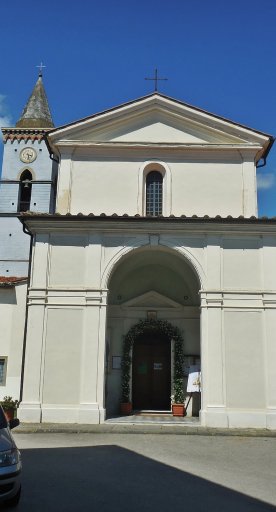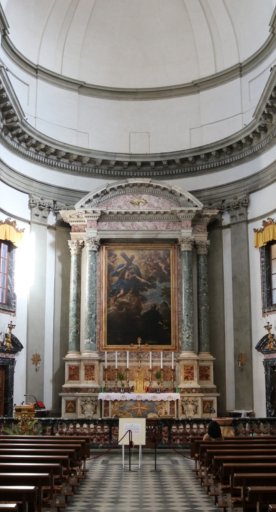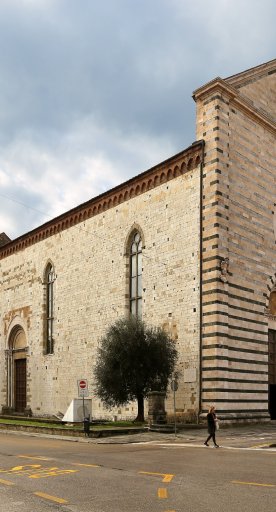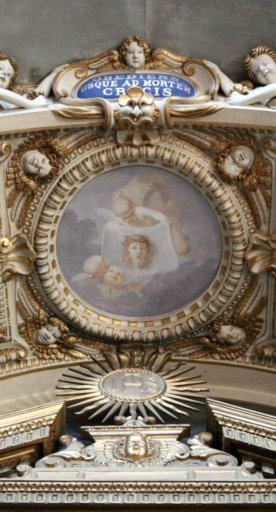Oratory of San Desiderio in Pistoia
A small church that holds a beautiful 16th-century fresco
The former Oratory of San Desiderio in Pistoia has been mentioned since 1084. At that time it was probably a convent of Benedictine nuns, later suppressed in the 15th century by Pope Eugene IV. Having become a pilgrims' hospital, the building underwent several other changes over the centuries: in 1516 it was used again as a monastery for Franciscan nuns, until the suppression of the monastic orders in the 18th century. By the 20th century, the church had been turned into a simple lumber warehouse, only to be handed over in 1938 to the then Ministry of National Education with the obligation to make it visitable.
Apparently an anonymous and uninteresting building, the richness of the Oratory of San Desiderio is hidden inside. The church, which upon entering presents itself as a bare rectangular hall, houses on the entire back wall a very significant fresco both in terms of size and beauty: it is the work of Sebastiano Viti, an artist from the Verona area who, having moved to Pistoia, created the masterpiece in the second half of the 16th century.
The fresco, known as the Crocefissione di San Desiderio e dei diecimila martiri (Crucifixion of San Desiderio and the Ten Thousand Martyrs), actually depicts the Crocifissione di Acacio e dei diecimila martiri sul Monte Arat (Crucifixion of Acacius and the Ten Thousand Martyrs on Mount Ararat). According to tradition, the ten thousand martyrs were a group of Roman soldiers led by the former centurion St. Acacius who were crucified on Mount Ararat (in Armenia) for converting to Christianity.



